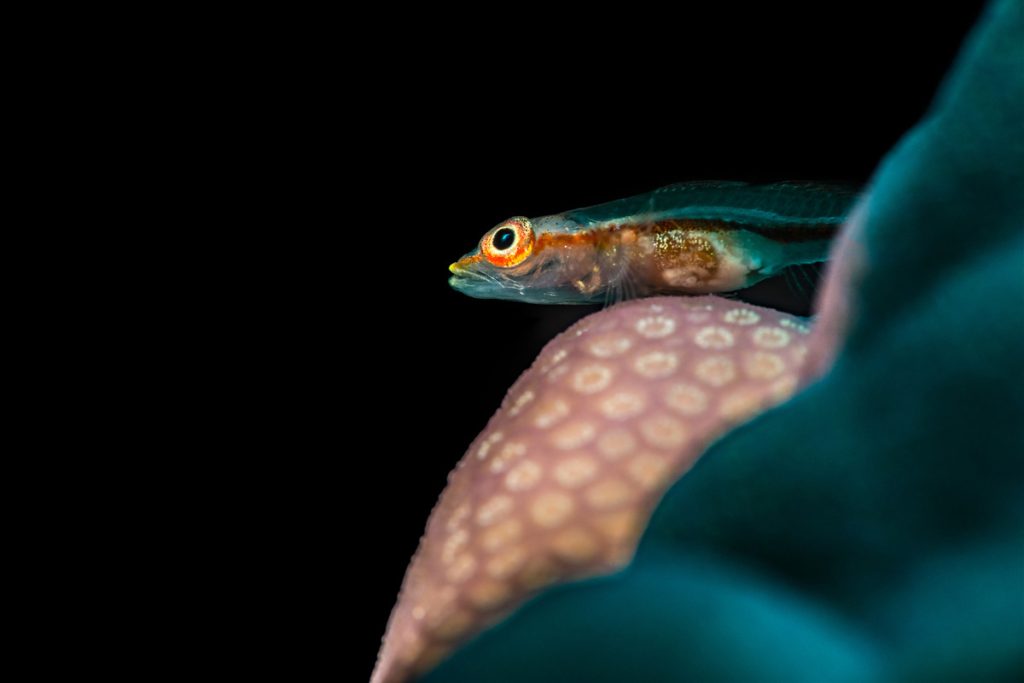If you look carefully at this semi-translucent little fish you can see its organs. The ghost goby lives mainly on massive stony corals to around 30 m, in the Indo-Pacific including in the Red Sea.
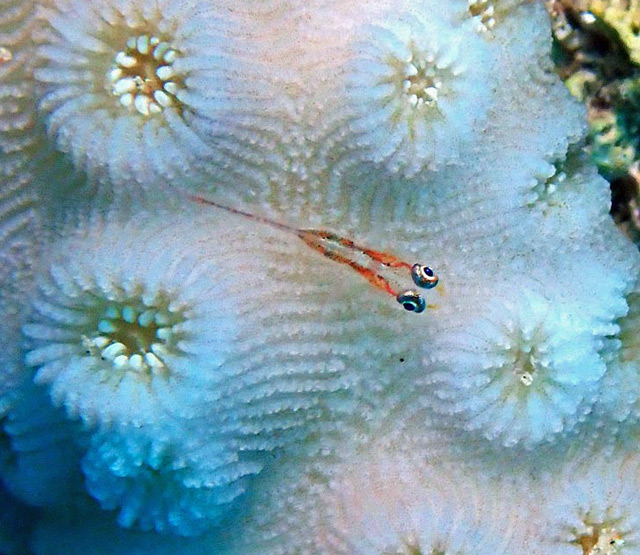
Our ghost goby, Pleurosicya micheli has red fluorescent eyes. This is probably to help them forage for their preferred food of miniscule crustaceans, as red fluorescence enhances visual contrast at depths below 10 m.
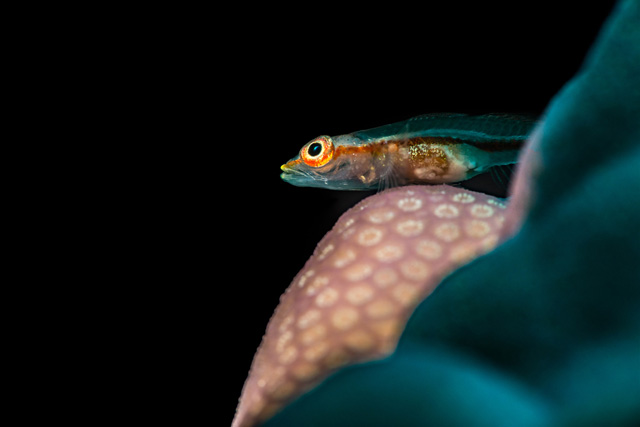
Also known as the stony coral ghostgoby, the fish lays its eggs on sea squirts. The female lays relatively few eggs but they are then guarded by the male against predators.
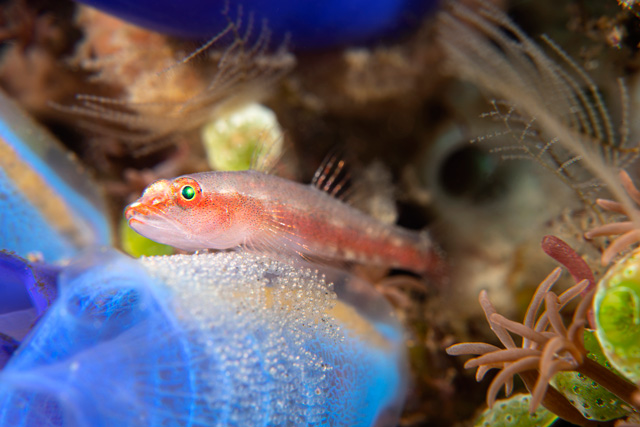
The family Gobiidae comprises at least 2000 species. More than half of these are found on coral reefs. Many coral reef gobies are capable of bi-directional sex change, sometimes more than once. Another adaptation which increases the potential number of offspring.
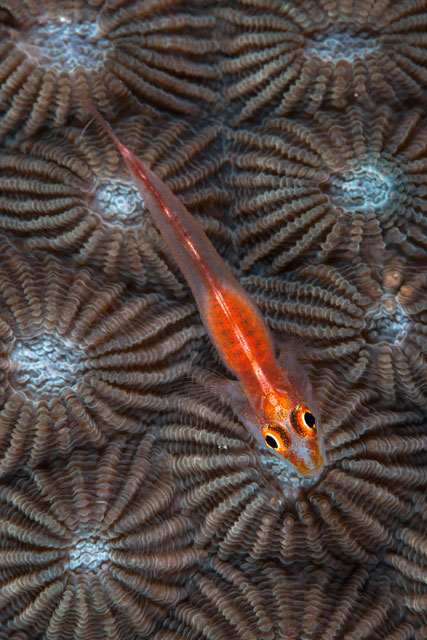
Vertebrata > Osteichthyes > Teleostei > Gobiiformes > Gobiinae > Pleurosicya > Pleurosicya micheli
References
Meadows et al. Red fluorescence increases with depth in reef fishes, supporting a visual function, not UV protection, Proceedings of the Royal Society, 2014
Gobies on Coral Reefs. Chapter in The Biology of Gobies, R. A. Patzner et al (editors). Science Publishers, Jersey, British Isles, New Hampshire 2011
Image credits:
- Ghost goby: DepositPhotos
